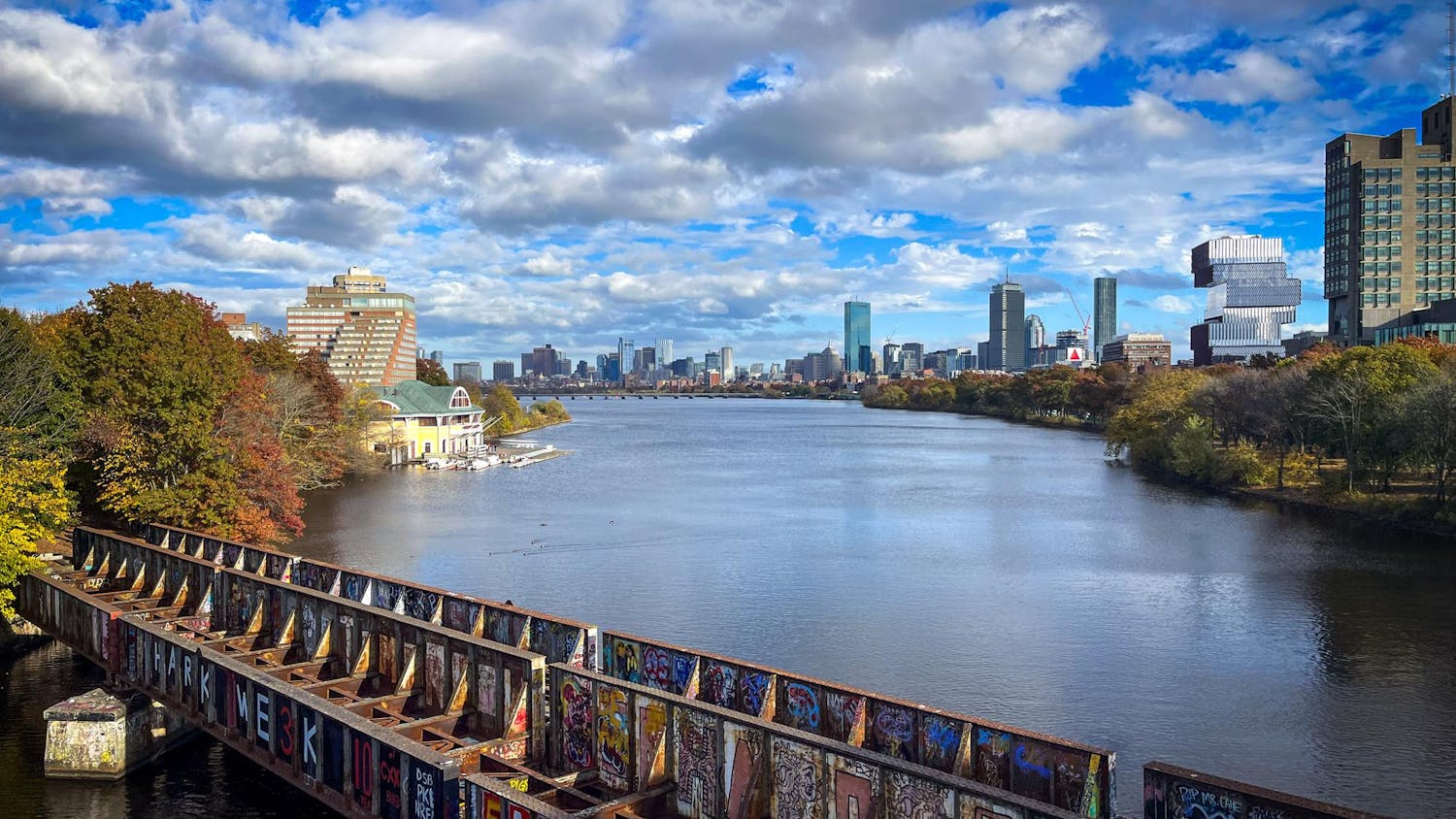“Step outside but not to brawl,” Anthony Kiedis croons in my ear, and I oblige. The midnight wind is cold, not chilling, drifting across the Wren bridge. Light orange, brown leaves pepper the sidewalk, still soft underfoot — “Autumn’s sweet, we call it fall.” I wander in the general direction of Haskell Hall, dodging construction zones — “I’ll make it to the moon if I have to crawl” — with only a gentle glow to guide me. Past Fletcher, I round an arcing stretch of well-trodden grass, fading yellows drowned out by freshly exposed dirt, down the hill towards the Courts. I diverge from the pavement, freeing myself from its rigid hold as I follow in the footsteps of my peers. My path, imprinted in gentle footfalls, overlays hundreds and thousands of others before it, constructing a collective path of passion — otherwise known as a desire path.
If it were only a few months earlier, this course would have differed slightly. With what can only be wanton malice, a portion of the fence bordering the sidewalk was extended over the summer to obstruct the previous, more direct iteration of this path up the hill, and the grass was reseeded to erase all evidence of its existence. Despite all this effort, the newly formed, curved footpath evinces the same route. The same desire.
Whether you call them cow paths, olifantenpaadjes (elephant trails), chemins de l’âne (donkey paths) or kemonomichi (beast trails), such desire lines are a language of universal communication — a want, an interest or a need carved into the physical reality of our world. By subverting the normal and established, these paths create a new reality with its own, a constantly evolving, physical structure.
Legend has it that Broadway cast itself along the Wickquasgeck Path — a routinized, efficient Amerindian desire path; thus small instances of rebellious walk sum to a canonized, concretized walk. This can be evanescent, like the beautifully named snowy neckdowns, “sneckdowns,” whereby actual car routes are recorded through freshly fallen snow. This can also be enduring and gradual, like millennia of collective footfalls wearing down ancient staircases that are surely echoed in the seemingly innocuous wear and tear that surrounds us today. Nothing can hold itself physically immutable to the human spirit.
Why limit ourselves purely to the physical? We construct, enshrine and routinize all of the structures that govern our lives. Much like an inefficient sidewalk, when social structures fail to serve individuals, “people often take other paths to meet their end goals.” When those alternative paths are repeated into collective social meaning, they can create social desire paths. We deviate out of necessity, but also out of rebellion — disavowing and reworking “existing infrastructures to different ends,” whether that be social or physical infrastructure. To Chinese poet Lu Xun, “Hope is like a path in the countryside: originally there was no path — yet, as people are walking all the time in the same spot, a way appears.”
To Virginia Woolf, even a simple ellipsis is a desired path, as deviating thoughts forge new meaning in their failure to return to the established trail. Our expression, our institutions, our social systems and our physical civilization are made and remade on the basis of patterned individual desires and whims. To walk off course is to make us more human…
However, consider the issue from the blade of grass’s view. An errant walk, legitimized or not in the human consciousness, results in complete destruction. To etch and eternally affirm a desired path requires hurt in the reshaping and subjugation of the natural landscape. Maybe it was the natural world I heard singing, crying for “scar tissue that I wish you saw.” Wrought in that scar tissue, our past and our collective abridge the present and the individual — through desire, through carving, through taking.
Ancient trees bend to ancient towpaths, forming holloways, mesmerizing semi-underground tunnels worn into the Earth in European forests. Plants have evolved to flourish in these shaded lanes, the human desire has intertwined itself with the natural. Along these primeval desire paths, I imagine haywains trundling forward. In Hieronymus Bosch’s vision, this is sin. As man, overwhelmed with desire and interest, takes and takes and takes — charting a path aside from heaven and thus constructing their own hell. I am not so cynical. I am confident that we, by ‘taking’ a different path, also create and give something in return. Progress, hope, courage and a comforting reminder that we are never truly individuals. Our paths are not ours to walk alone…






